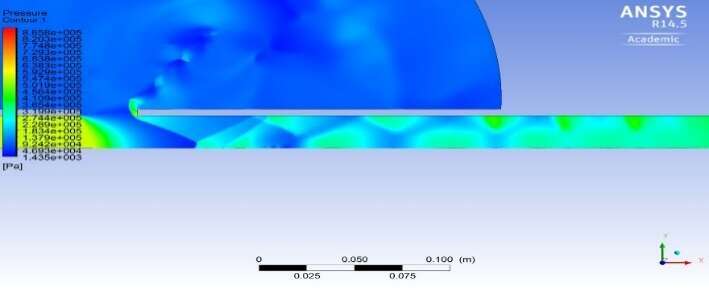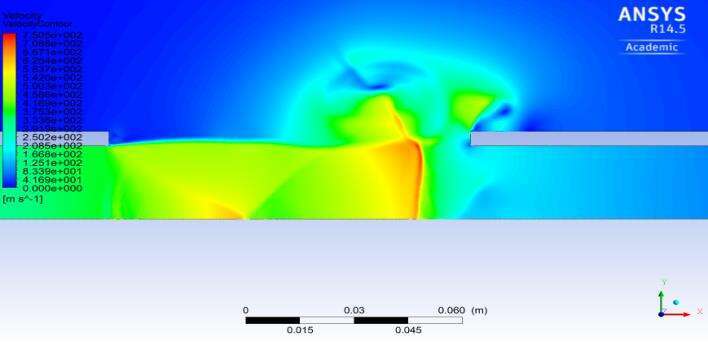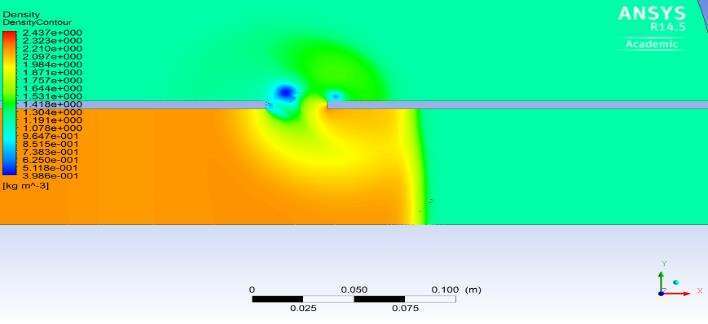Shock-Induced flow through a pipe gap
Kapfudzaruwa S., Skews B.W., Paton R.T.
Flow Research Unit, University of the Witwatersrand, South Africa.
An explosive accident in an industrial gas pipe will result in stress waves propagating down the piping at high speeds and could result in pipe rupture, or failure at flanges causing them to separate. This is followed by a slower shock wave propagating through the gas in the pipe. An earlier study by Skews et al. (2014) over limited boundary conditions showed very interesting gas dynamic phenomena. The present study looked at the resulting flow features over extended boundary conditions at the separation point and in the upstream and downstream pipe. This preliminary study used numerical investigations. The boundary conditions were extended to different gap widths of 40,50,60,70,100 and 150mm. Mach numbers of 1.5, 2.2 and pipe diameters of 50mm and150mm. Complex flow patterns resulted for the 40 to 70mm gap widths. A strong expansion wave propagated in the upstream pipe as the initial shock moved downstream at reduced strength. Vortex leapfrogging of the primary and secondary vortices was also observed.100mm and 150mm gaps had a transition of the normal jet on interaction with the downstream pipe. For Mach 2.2 the flow exited the upstream pipe supersonically and resulted in wave reflections downstream and characteristic supersonic jets. The 150mm diameter pipe showed a much slower development of the standing shock. Experimental verification is currently taking place and will be reported on.




Fig.1a-d. Contours for different boundary conditions.a Pressure Contours Mach 1.5, 70mm gap; b Pressure Contours 30mm gap, Mach 2.2; c Velocity Contours for Mach 1.5, 100mm gap; d Density Contours Mach1.5, 150mm diameter pipe.
References:
1) Skews B W, Platt D and Paton R: Compressible flow through a ruptured pipe 16th ISFV, 2014.

